Starting fresh with a new bookkeeping client is like setting the stage for a play. The first act is all about understanding who they are and what they need. This isn’t just about crunching numbers; it’s about building trust, setting expectations, and making sure you’re both on the same page from day one. A smooth onboarding process, clear communication, and staying compliant are key to a successful partnership. Let’s dive into what makes this process tick.
Key Takeaways
- First impressions are important. Make sure to understand your client’s business needs and set clear expectations from the start.
- Streamline the onboarding process by gathering essential documents and using automation tools to handle repetitive tasks.
- Maintain a strong relationship with your client through open communication, addressing concerns gracefully, and celebrating milestones together.
Getting to Know Your New Bookkeeping Client
Alright, so you’ve got a new client on board. Now, how do you make sure that first meeting doesn’t feel like an awkward first date? Start with a smile and a firm handshake. It sounds old-school, but you’d be surprised how much it sets the tone. Get to know them a little—ask about their business journey or their favorite coffee (because who doesn’t love a good caffeine chat?).
Understanding Their Business Needs
Once the ice is broken, it’s time to dig a bit deeper. What keeps their business ticking? Are they a startup trying to conquer the world, or a family business that’s been around since your grandma was in pigtails? Understanding their goals helps tailor your bookkeeping services just right. Make a list of their top priorities—maybe it’s cash flow, tax planning, or just someone to handle the mountain of receipts piling up.
Setting Clear Expectations from Day One
Nobody likes surprises, especially in bookkeeping. Set the stage by laying out what they can expect from you and what you need from them. It’s like setting the rules for a board game—everyone’s on the same page, and there’s less chance of flipping the board in frustration. Discuss timelines, communication preferences, and any software tools you’ll be using. Trust me, clarity now saves headaches later.
"The beginning of a client relationship is like planting a seed. Nurture it with understanding and clear communication, and it will grow into a fruitful partnership."
And there you have it, the first steps to getting cozy with your new bookkeeping client. Keep it light, keep it clear, and watch that relationship bloom.
Streamlining the Onboarding Process

Creating a Seamless Transition
Alright, so you’ve landed a new bookkeeping client. Congrats! Now, it’s time to make sure their move to your services is smoother than a fresh jar of peanut butter. First things first, get to know their current setup. Are they using spreadsheets from the Stone Age, or are they already on a cloud-based system? Knowing this helps you tailor the transition process. Communication is your secret weapon here. Keep them in the loop, reassure them that you’ve got this, and trust me, they’ll appreciate it.
Essential Documents to Gather
Before you dive headfirst into the numbers, make sure you’ve got all the necessary paperwork. Think of it like packing for a vacation – you don’t want to forget your toothbrush, right? Here’s a quick checklist:
- Previous financial statements
- Tax returns from the last few years
- Any existing bookkeeping records
Having these on hand not only helps you get a clear picture of their financial health but also makes sure you’re not missing any crucial details.
Automating the Mundane: Tools and Tips
Let’s face it, nobody wants to be stuck doing the same repetitive tasks over and over. Enter automation! Tools like Zapier can save you a ton of time by handling routine tasks. Whether it’s syncing bank transactions or generating monthly reports, automation is your best friend. So, set it up, sit back, and let the robots do the heavy lifting. Just remember, while technology is awesome, a human touch is irreplaceable.
Building a Strong Client-Bookkeeper Relationship
Communication is Key: Keeping the Dialogue Open
Alright, let’s face it—communication is like the secret sauce in any relationship, and your client-bookkeeper bond is no different. You want to be the bookkeeper who not only crunches numbers but also listens and responds. Make it a habit to check in regularly, even if it’s just to say, "Hey, everything’s on track!" This builds trust and makes your client feel valued. Consider setting up a monthly call or a quick email update to keep things transparent. Remember, a happy client is a loyal client!
Handling Client Concerns with Grace
Ever had a client who seemed to be in a constant state of panic about their finances? It’s like they’re starring in their own financial thriller. Your role? Be their calm in the storm. When concerns pop up, address them promptly and with empathy. Acknowledge their worries, provide clear explanations, and offer solutions. This approach not only resolves issues but also strengthens your relationship. And who knows, you might even turn their financial nightmares into dreams of balance sheets and profit margins!
Celebrating Milestones Together
Who says bookkeeping can’t be fun? Celebrate those small victories with your clients. Did they finally hit their quarterly targets? Maybe they managed to save a bit more than expected? Throw a mini celebration—send a congratulatory email or even a small gift. It’s these little gestures that show you care about their success as much as they do. Plus, it makes the whole bookkeeping process a bit more human and a lot less like a math class.
Ensuring Compliance and Accuracy

Staying Ahead of Regulatory Changes
Alright, let’s dive into the fun world of compliance! Regulations, while not the most thrilling topic, are like the rules of a board game. You gotta know them to play right. Staying on top of these ever-changing rules is crucial. Why? Because falling behind can lead to hefty fines or worse. So, what’s the plan? Make it a habit to regularly check for updates in laws that affect your business. Join industry groups or subscribe to newsletters that keep you in the loop. Remember, being proactive is way better than scrambling at the last minute.
Implementing Checks and Balances
Think of checks and balances as your business’s safety net. These are the systems that prevent errors and keep your books accurate. Start by separating duties among your team. No one person should handle all aspects of a transaction. This reduces the risk of errors or even fraud. Regular audits, either by someone in-house or an external party, can also help catch mistakes before they become big problems. And hey, it’s not just about catching mistakes—it’s about ensuring everything runs smoothly.
The Role of Technology in Accuracy
Technology is your best friend when it comes to accuracy. Automated systems can handle repetitive tasks, reducing human error and saving you a ton of time. Consider using automated tools in the accounting industry to streamline your reporting processes. These tools ensure accuracy and consistency, making compliance a breeze. Plus, they free you up to focus on more strategic tasks. Embrace the tech, and let it do the heavy lifting for you!
"Accuracy in bookkeeping isn’t just about avoiding mistakes—it’s about building trust with your clients and ensuring your business’s longevity."
So, keep your eyes on the compliance ball, set up those checks and balances, and let technology be your co-pilot in this journey. Happy bookkeeping!
Wrapping It Up: Your Bookkeeping Adventure Awaits!
So there you have it, folks! Your ultimate checklist for onboarding new bookkeeping clients in 2025. It’s like setting out on a road trip with a map, snacks, and a playlist that slaps. Sure, there might be a few bumps along the way, but with this guide, you’re more than ready to tackle them. Remember, every client is unique, just like every episode of your favorite binge-worthy series. Keep things organized, stay curious, and don’t be afraid to ask questions. After all, even the best accountants started somewhere. Now, go forth and conquer those books like the financial wizard you are! 🚀
Frequently Asked Questions
What should I bring to my first meeting with a bookkeeper?
When meeting your bookkeeper for the first time, it’s a good idea to bring financial records like bank statements, tax returns, and any existing bookkeeping files. This helps them understand your financial situation better.
How often should I communicate with my bookkeeper?
It’s best to have regular check-ins with your bookkeeper. Monthly meetings are common, but you might need to talk more often if your business is very active or facing changes.
What tools can help automate bookkeeping tasks?
There are many tools available to automate bookkeeping, such as QuickBooks and Xero. These tools can help with things like invoicing, tracking expenses, and generating financial reports.







